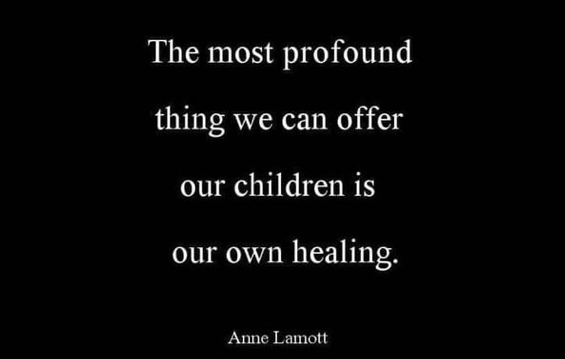EMDR (eye movement desensitization reprocessing) is a specific type of therapy for trauma. It is a researched therapy and recommended by the WHO for PTSD and traumatic events.
What can EMDR be used for?
-fear of childbirth, or other phobias
-birth trauma
-ptsd
-historical traumas that are resurfacing now that you are a parent
-any overwhelming, traumatic or disturbing event that has occurred in your life
“In addition, referral for advanced treatments such as cognitive-behavioural therapy (CBT) or a new technique called eye movement desensitization and reprocessing (EMDR) should be considered for people suffering from PTSD. These techniques help people reduce vivid, unwanted, repeated recollections of traumatic events.” (World Health Organization, 2015)
See link for more information: EMDR information, and what is EMDR
EMDR FAQ:
What is EMDR?
The mind can often heal itself naturally, in the same way as the body does. The mind and body naturally want to move towards healing. Much of this natural coping mechanism occurs during sleep, particularly during rapid eye movement sleep. However trauma memories do not always get processed this way on their own; Francine Shapiro developed Eye Movement Desensitization and Reprocessing (EMDR) in 1987, utilizing this natural process in order to successfully treat Post-traumatic Stress Disorder (PTSD). Since then, EMDR has been used to effectively treat a wide range of mental health problems. We use eye movements or tapping paired with the memory to help the brain process the memory in a complete way. “Once the event has been reprocessed, new events in the present will not serve as triggers.”(Tal Croitoru).
What happens when you are traumatized?
Most of the time your body routinely manages new information and experiences without you being aware of it. However, when something out of the ordinary occurs and you are traumatized by an overwhelming event (e.g. a car accident) or by being repeatedly subjected to distress (e.g. childhood neglect), your natural coping mechanism can become overloaded. It may be a memory that was not ‘traumatic’, however you were not able to process it in the way it needed to be at the time (due to age, fear, lack of sleep, etc.); it gets stored in our brain, and may be triggered later on in life. This can be helped with EMDR processing.
This overloading can result in disturbing experiences remaining frozen in your brain or being “unprocessed”. Such unprocessed memories and feelings are stored in the limbic system of your brain in a “raw” and emotional form, rather than in a verbal “story” mode. The traumatic memories can be continually triggered when you experience events similar to the difficult experiences you have been through. Often the memory itself is long forgotten, but the painful feelings such as anxiety, panic, anger or despair are continually triggered in the present. You may not know they are related and wonder why you keep struggling. Alternatively, you may know they are related. Either is completely fine, with the therapist’s support, we find the right memories to target.
What is an EMDR session like?
EMDR utilizes the natural healing ability of your body. After a thorough assessment, you will be asked specific questions about a particular disturbing memory. Eye movements, similar to those during REM sleep, will be recreated simply by asking you to watch the therapist’s finger moving backwards and forwards across your visual field. The eye movements will last for a short while and then stop. You will then be asked to report back on the experiences you have had during each of these sets of eye movements. Experiences during a session may include changes in thoughts, images and feelings. You do not have to report on the traumatic memories if you prefer.
With repeated sets of eye movements, the memory tends to change in such a way that it loses its painful intensity and simply becomes a neutral memory of an event in the past. Other associated memories may also heal at the same time. This linking of related memories can lead to a dramatic and rapid improvement in many aspects of your life.
What can EMDR be used for?
In addition to its use for the treatment of Post-traumatic Stress Disorder, EMDR has been successfully used to treat:
- anxiety/ panic attacks, public speaking, depression, trauma, childbirth trauma, postpartum depression, phobias, self-esteem and performance anxiety (and more).
Who can use EMDR?
EMDR can accelerate therapy by resolving the impact of your past traumas and allowing you to live more fully in the present. It is not, however, appropriate for everyone. You may need some (or many) sessions to prepare with your therapist to build trust before any trauma work begins. The EMDR process is rapid, and any disturbing experiences, if they occur at all, last for a comparatively short period of time. Nevertheless, you need to be aware of, and willing to experience, the strong feelings and disturbing thoughts, which sometimes occur during sessions.
How long does treatment take?
EMDR can be brief focused treatment or part of your regular counselling. The most effective EMDR sessions are 90 minutes (or longer).
Will I will remain in control and empowered?
During EMDR treatment, you will remain in control, fully alert and wide-awake. You can stop the process at any time. Throughout the session, the therapist will support and facilitate your own self-healing and intervene as little as possible. Reprocessing is usually experienced as something that happens spontaneously, and new connections and insights are felt to arise quite naturally from within. As a result, most people experience EMDR as being a natural and very empowering therapy.
What evidence is there that EMDR is a successful treatment?
EMDR is an innovative clinical treatment that has successfully helped over a million individuals. The validity and reliability of EMDR has been established by rigorous research. Please contact me if you would like more reliable sources of research on EMDR. Like any therapy, it must be done with trained therapist you trust.

